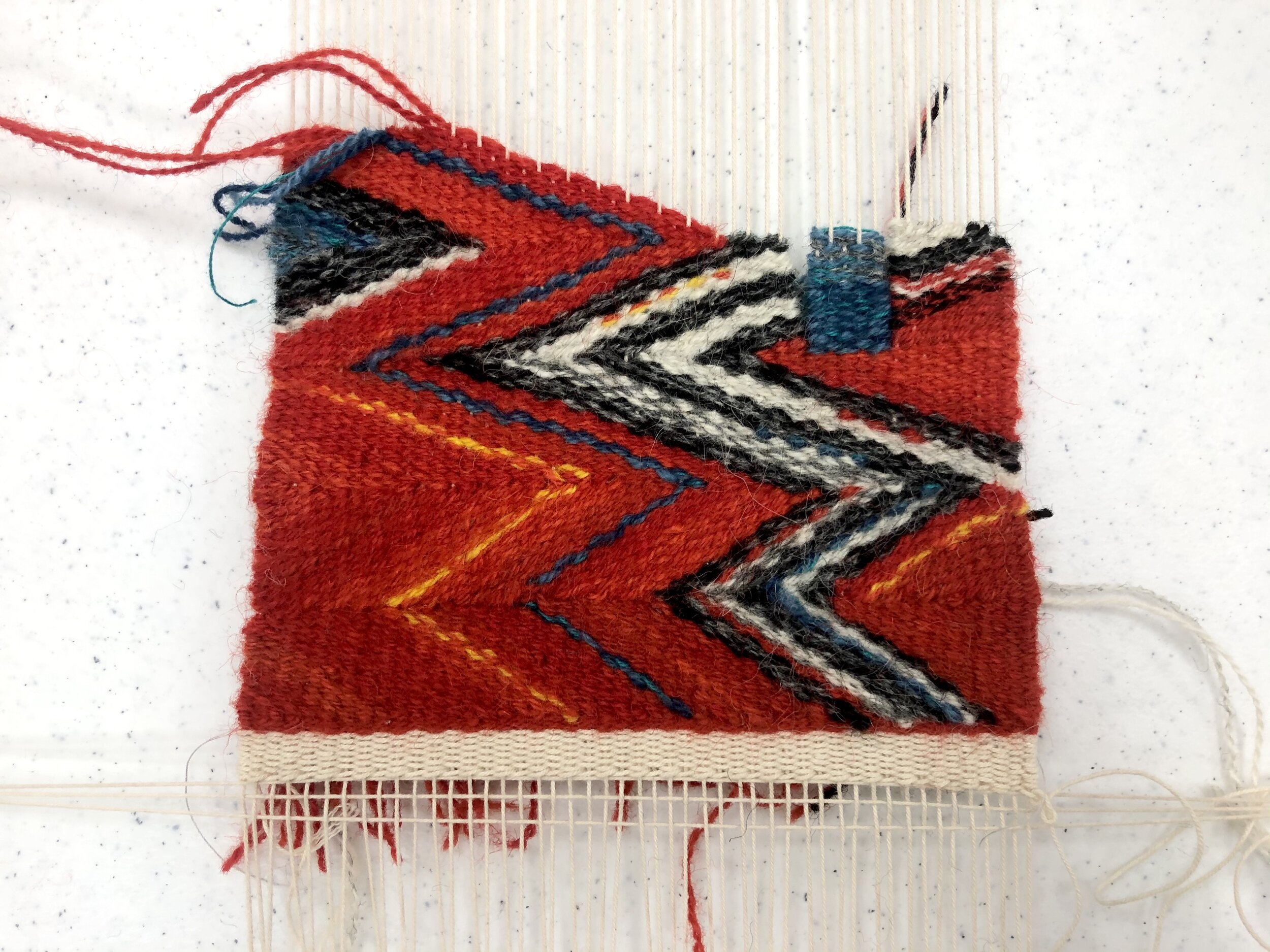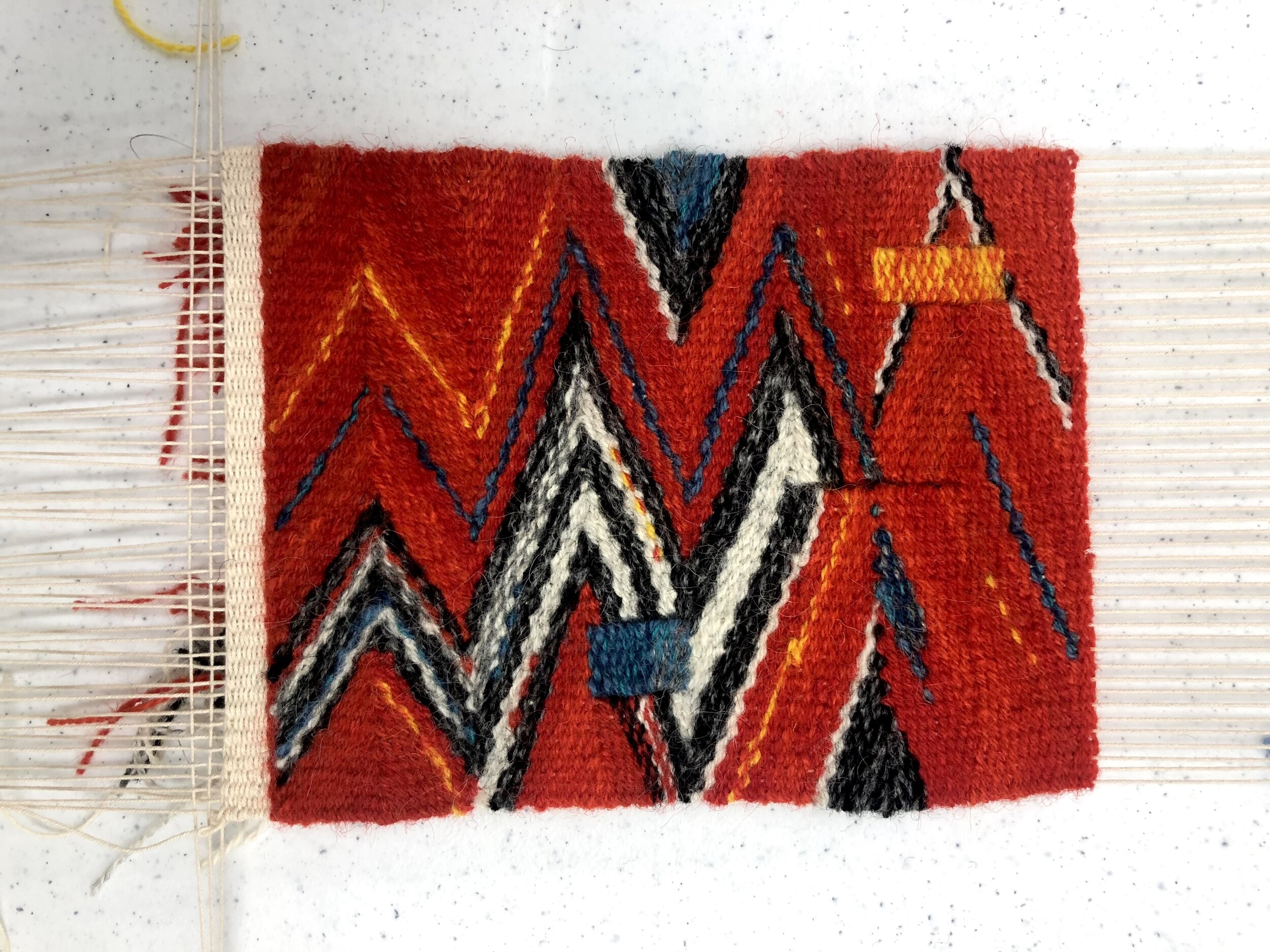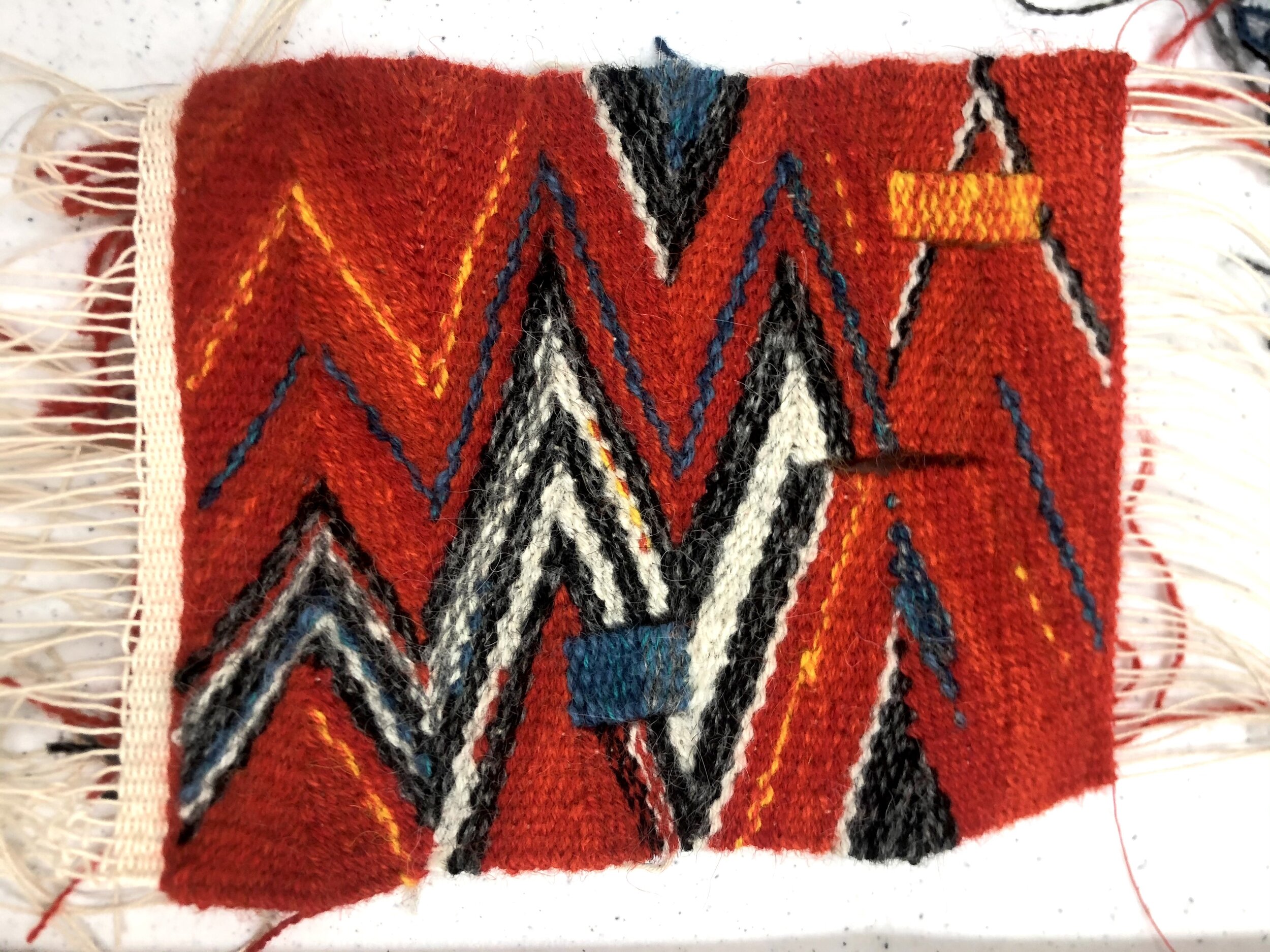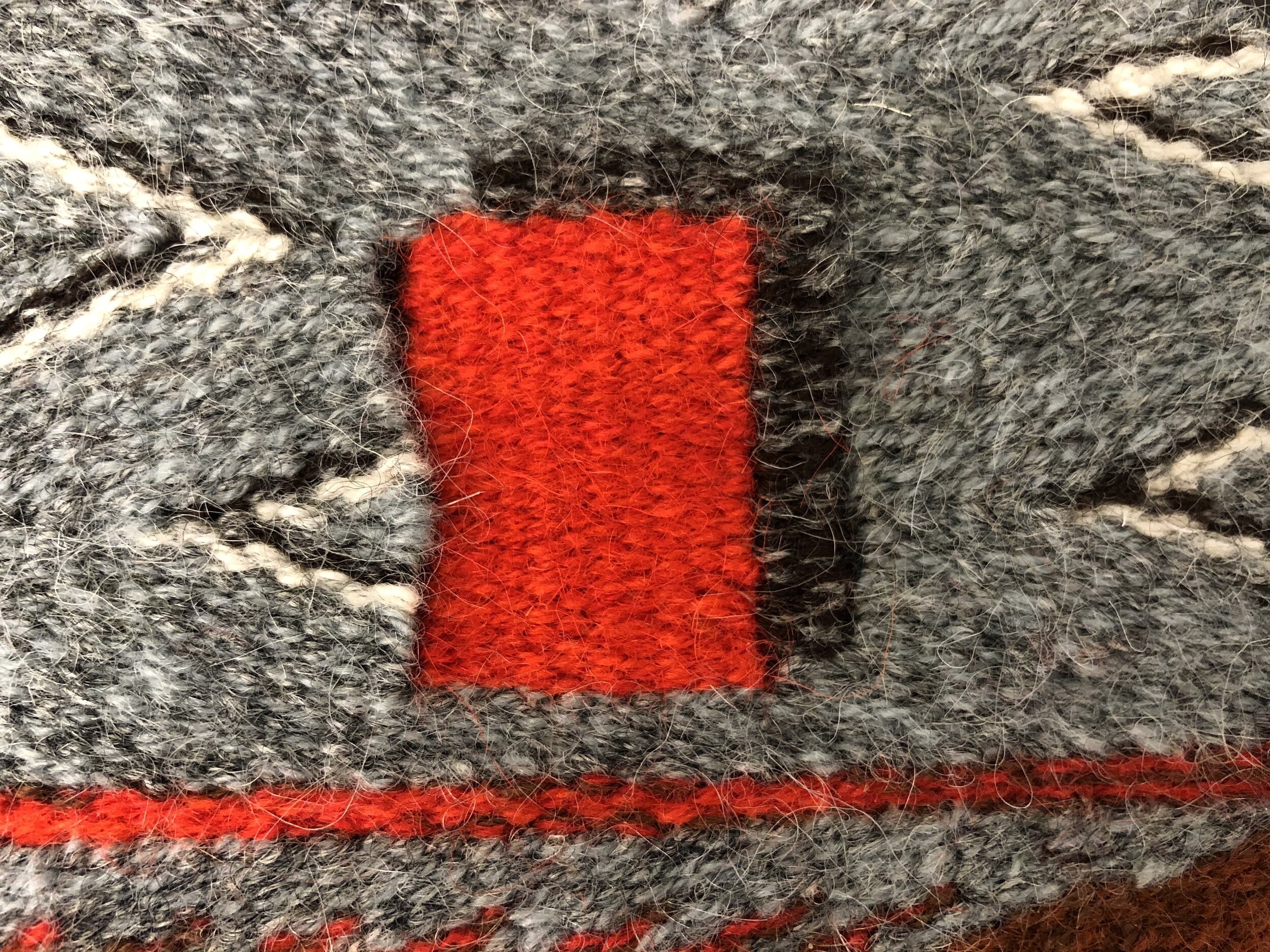I’m coming off a workshop (ok it was 2 weeks ago) with the wonderful Connie Lippert at John C. Campbell Folk School focused on wedge weave, a variation on pulled warp tapestry technique. I love tapestry studio time because it gives me the space to ask questions and weave samples to try to find the answers. Pictured at right is my first piece in progress. I had a whole slew of things to test out in this sample, including:
turning back the weft after every thread vs. every other thread (changes the angle of the wedge)
weaving a shape in “horizontal” tapestry (i.e. the way I normally do) in the middle of a wedge
weaving wedges in 2 directions to meet with a slit in the middle
navigating how to continue a color up the piece and working out where to start + end weft bundles to create the shapes I wanted
Above you can see the difference that wet finishing made in the way the warp moved. Top left image is with the piece still on the loom, top right is after cutting off, and bottom is after wet finishing. This sample I finished in my normal way which is a light spray with water and a gentle steam iron, but I didn’t pin it as I usually do when blocking to allow the warp to move.
I wove the next sample to test out a few color gradient techniques, including hatching, pick & pick, and color blending in weft bundles.
In the top section, I sampled weaving a larger horizontally-woven rectangle with a shadow to test out sewing slits and see if the warp movement would affect that seam. Wet finishing didn’t have a huge impact on the shape of the rectangles or the sewn slit, but the edges of the wedges right next to the orange rectangle did move quite a bit, as you can see below.
I finished this piece using Connie’s method: soaking a few towels in warm water and laying them overnight on the tapestry, sitting on a piece of plastic sheeting, then removing the towels and letting the piece dry.
All in all it was such a treat to be a part of a tapestry workshop again! Connie is so knowledgeable on this topic and it was so great to finally get a chance to learn from her.
Project details:
12/6 cotton seine twine warp
Vevgarn Frid wool weft, usually used held double, sometimes with cotton accent threads added





